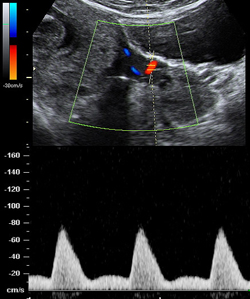Screening for pre-eclampsia
Pre-eclampsia (PE, affects about 2% of pregnancies and is a major cause of perinatal and maternal morbidity and mortality
- Early PE (requiring delivery before 34 weeks) rather than late PE is associated with an increased risk of perinatal mortality and morbidity and both short-term and long-term maternal complications
- Identification of women at high-risk for PE could potentially improve pregnancy outcome because intensive maternal and fetal monitoring in such patients would lead to an earlier diagnosis of the clinical signs of the disease and the associated fetal growth restriction and avoid the development of serious complications through such interventions as the administration of antihypertensive medication and early delivery
- Early identification of the high-risk group for development of PE is also important for future studies investigating the potential role of pharmacological interventions starting from the first trimester to improve placentation and reduce the prevalence of the disease
The underlying mechanism for PE is thought to be impaired placentation, documented by the findings of abnormal blood flow in the uterine arteries and reduced maternal serum levels of placental products
- The patient-specific risk of developing PE can be predicted by a combination of factors in the maternal history, high body mass index and prior or family history of PE, and the following measurements taken at 11-13 weeks:
- maternal blood pressure
- uterine artery pulsatility index (PI)
- maternal serum level of PAPP-A
- maternal serum level of PLGF
- Screening by this combined approach could identify about 90% and 45% of patients developing early-PE and late-PE, respectively, at a false positive rate of 5%





